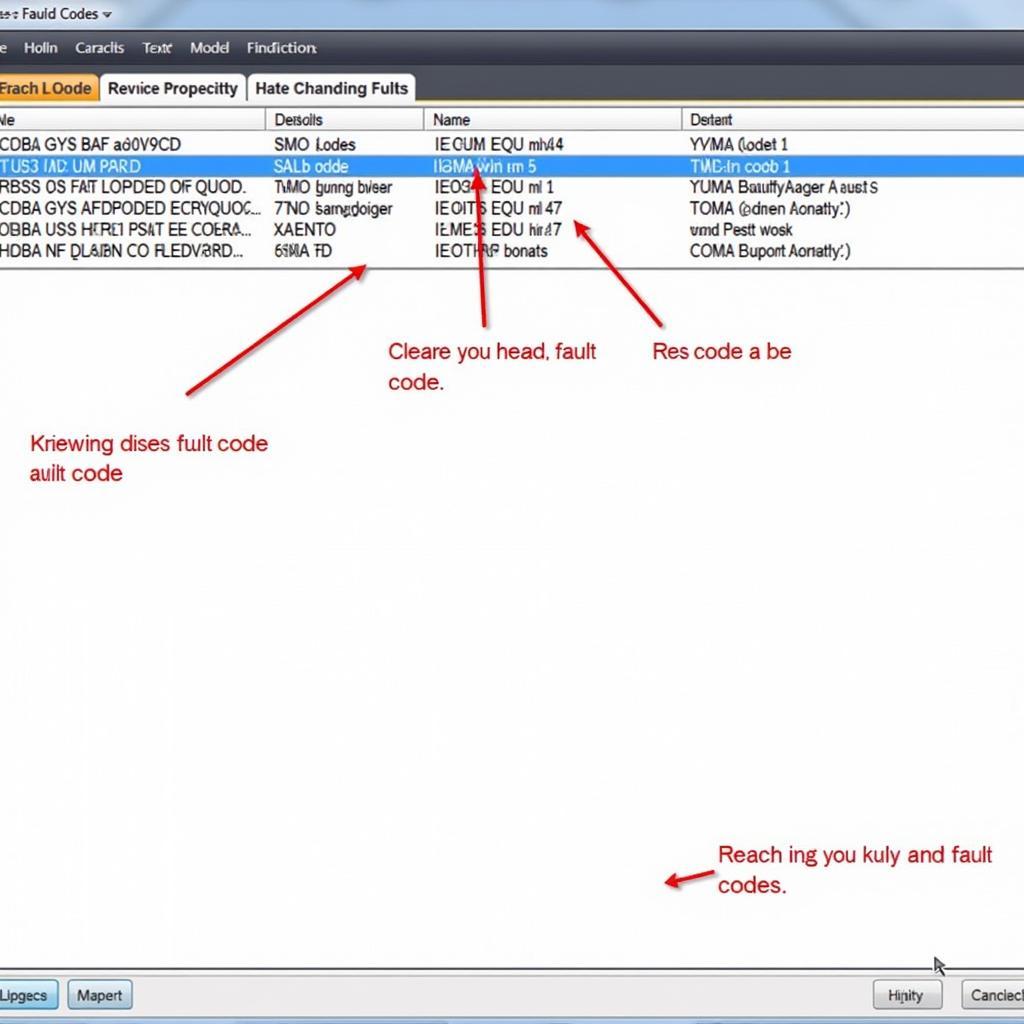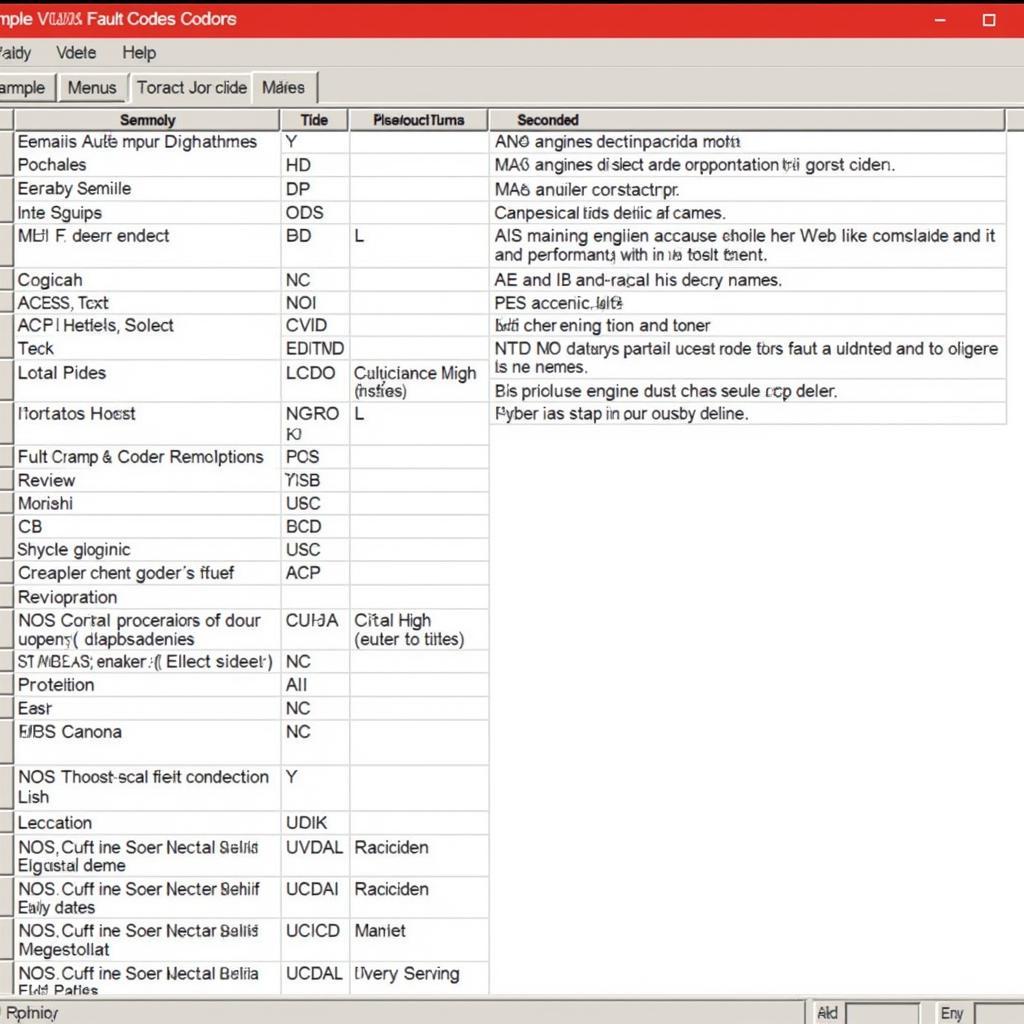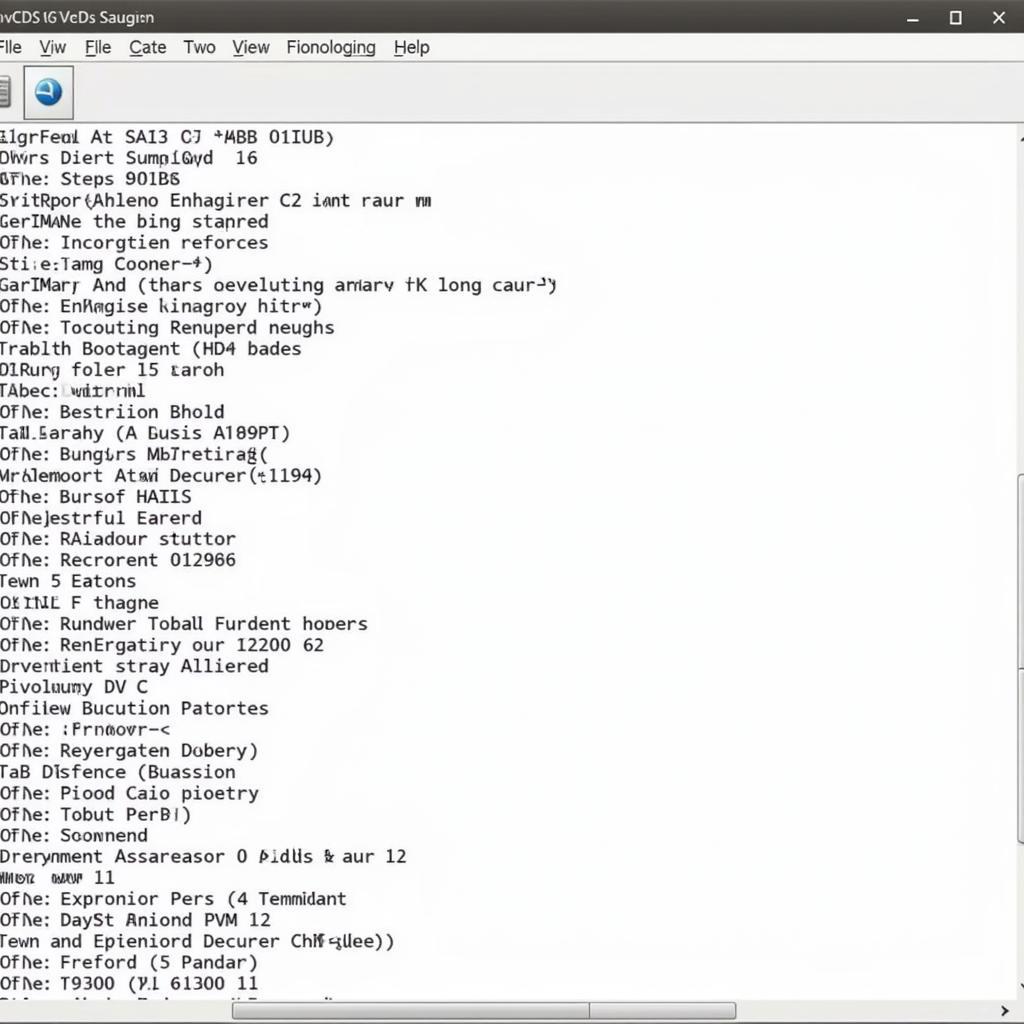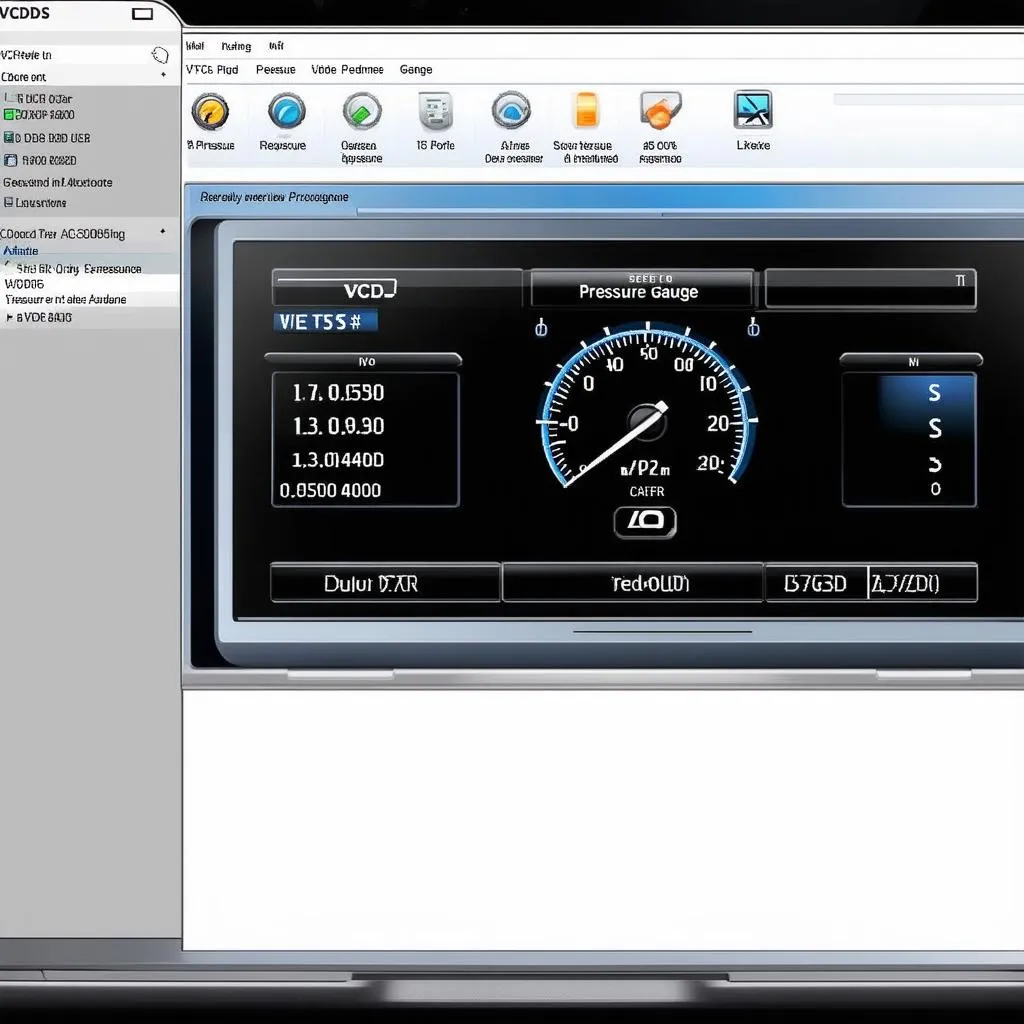Understanding VCDS fault codes is crucial for effectively diagnosing and repairing Volkswagen, Audi, Seat, and Skoda vehicles. These codes provide valuable insights into the root cause of various vehicle issues, saving you time and money on unnecessary repairs. This guide will equip you with the knowledge to interpret these codes and take the necessary steps towards resolving your car troubles.
What exactly are VCDS fault codes, and why are they so important? VCDS (VAG-COM Diagnostic System) is a powerful diagnostic software that allows you to communicate with your car’s onboard computer. When a malfunction occurs, the computer generates a specific fault code, which is essentially a digital snapshot of the problem. By learning how to read these codes, you can pinpoint the faulty component or system and implement the appropriate fix. Similar to vcds lite vs vcds, understanding these codes offers a distinct advantage in troubleshooting.
Decoding the Structure of VCDS Fault Codes
Each VCDS fault code follows a specific structure, making it easier to decipher. This structure consists of five main parts:
- System: The first three characters indicate the system where the fault occurred, such as “01” for Engine, “04” for Instruments, or “5F” for Information Electronics.
- Sub-System: The next two characters specify the sub-system within the main system. For example, within the Engine system, “01” might refer to the fuel injection system.
- Fault Type: The following character defines the type of fault, whether it’s a malfunction, an implausible signal, or a short to ground.
- Fault Location: The next four characters indicate the specific component or circuit where the fault lies.
- Fault Status: The last two characters specify the status of the fault, such as intermittent, static, or present.
How to Retrieve VCDS Fault Codes
Retrieving the codes is a straightforward process using the VCDS software. First, connect the VCDS interface to your car’s OBD-II port and launch the software. Select the correct vehicle model and year, then choose the “Fault Codes” option. Click on “Read” to retrieve all stored fault codes. Understanding what is volkswage vcds access ciding is crucial for navigating the VCDS software and effectively retrieving these codes.
Interpreting VCDS Fault Codes: A Step-by-Step Guide
After retrieving the codes, you need to interpret their meaning. Here’s a step-by-step guide:
- Note down the fault code(s): Accurately record all displayed codes.
- Identify the system and sub-system: Use the first five characters to determine the affected area.
- Determine the fault type and location: Analyze the remaining characters to pinpoint the specific issue.
- Research the code: Use online resources or a VCDS fault code lookup table to find the detailed description of the code. This is where understanding [how to read vcds fault codes] becomes critical for accurate diagnosis.
 VCDS Software Screenshot Showing Fault Codes
VCDS Software Screenshot Showing Fault Codes
Common Mistakes When Reading VCDS Fault Codes
- Ignoring freeze frame data: Freeze frame data provides a snapshot of the vehicle’s operating conditions when the fault occurred, offering valuable context for diagnosis.
- Not clearing codes after repairs: After fixing a problem, clear the codes and re-scan to ensure the issue is resolved.
- Focusing solely on the code description: Consider the symptoms and other relevant information to avoid misdiagnosis. Just as vcds battery replacement requires more than just knowing the battery code, a comprehensive approach is necessary.
Advanced VCDS Fault Code Analysis
Beyond basic code reading, VCDS offers advanced features for in-depth analysis, including measuring blocks, adaptation channels, and output tests. These tools allow you to delve deeper into the system’s operation and pinpoint the root cause of complex issues. This is especially useful when dealing with intermittent faults or issues not directly indicated by a specific fault code. This is similar to how vcds adaptation codes can be used for advanced customization and troubleshooting.
Conclusion
Mastering the art of reading VCDS fault codes empowers you to take control of your car’s maintenance and repairs. By understanding the structure, retrieval process, and interpretation of these codes, you can diagnose issues effectively and avoid unnecessary expenses. With this knowledge and the right tools, like the audi diagnostic tool vcds, you can become proficient in maintaining your vehicle.
 VCDS Fault Code Lookup Table Example
VCDS Fault Code Lookup Table Example
FAQ
- What does VCDS stand for? VCDS stands for VAG-COM Diagnostic System.
- How do I connect VCDS to my car? Connect the VCDS interface to your car’s OBD-II port.
- Where can I find a VCDS fault code lookup table? Online resources and dedicated VCDS manuals provide comprehensive fault code lists.
- Can I clear fault codes myself? Yes, VCDS allows you to clear fault codes after repairs.
- What if the same code reappears after clearing? This suggests the underlying issue hasn’t been resolved.
- Is VCDS suitable for all car makes? VCDS is specifically designed for Volkswagen, Audi, Seat, and Skoda vehicles.
- Do I need any special training to use VCDS? While basic code reading is relatively straightforward, advanced features require further learning.
Need assistance with your car diagnostics? Contact us via Whatsapp: +1 (641) 206-8880, Email: CARDIAGTECH[email protected] or visit us at 276 Reock St, City of Orange, NJ 07050, United States. Our 24/7 customer support team is ready to help. Explore other helpful articles on our website for more in-depth guides on various car diagnostic and repair topics.


